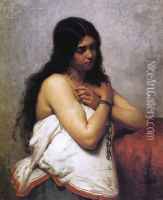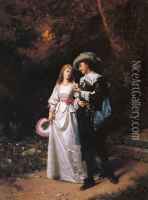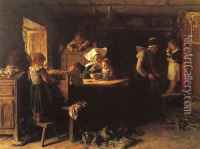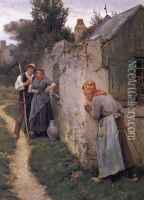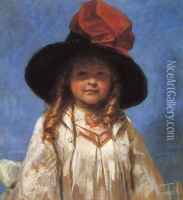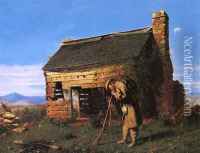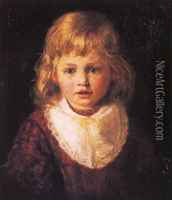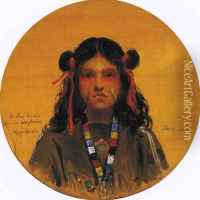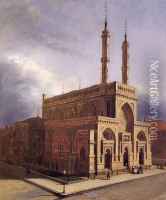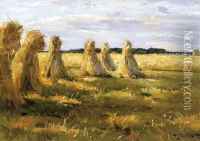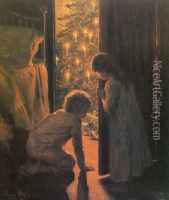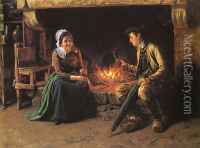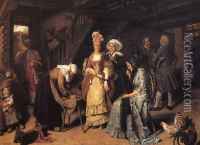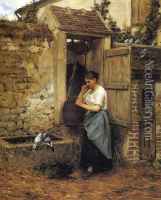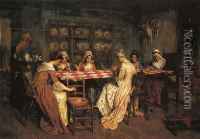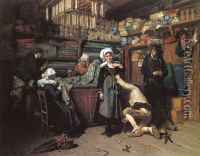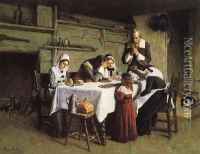Henry Mosler Paintings
Henry Mosler was a prominent American genre painter, illustrator, and etcher of the late 19th and early 20th centuries. Born on June 6, 1841, in Troppau, in what is now the Czech Republic (then part of the Austrian Empire), Mosler immigrated to the United States with his family in 1849, settling in New York City.
His early interest in art led him to study at the Düsseldorf Academy in Germany, a leading art school of the time. After his studies in Düsseldorf, Mosler furthered his training in Paris, where he was influenced by the French academic and salon painting traditions. He studied under notable artists such as Jean-Léon Gérôme and later, Carolus-Duran.
Upon returning to the United States, Mosler settled in Cincinnati, Ohio, which was then a burgeoning art center. He served in the Union Army during the American Civil War, an experience that provided material for some of his later works. After the war, he returned to Europe, spending significant time in Paris and London, where he continued to develop his style and exhibit his work.
Mosler's paintings often depicted everyday life, historical scenes, and rural American subjects. He was known for his attention to detail, composition, and ability to capture the essence of his subjects. Some of his most celebrated works include 'The Lost Cause' and 'The Birth of the Flag,' which reflect his American patriotism and interest in national themes.
Throughout his career, Mosler received numerous accolades for his work, including medals at the Paris Salon and the World's Columbian Exposition in Chicago. His paintings were also exhibited at the Royal Academy in London and the National Academy of Design in New York.
Henry Mosler's art was widely popular during his lifetime and was collected by many prestigious institutions. He remained active in the art world until his later years, passing away on April 21, 1920, in New York City. His legacy endures through his contributions to American genre painting, and his works continue to be studied and appreciated for their historical and artistic significance.
